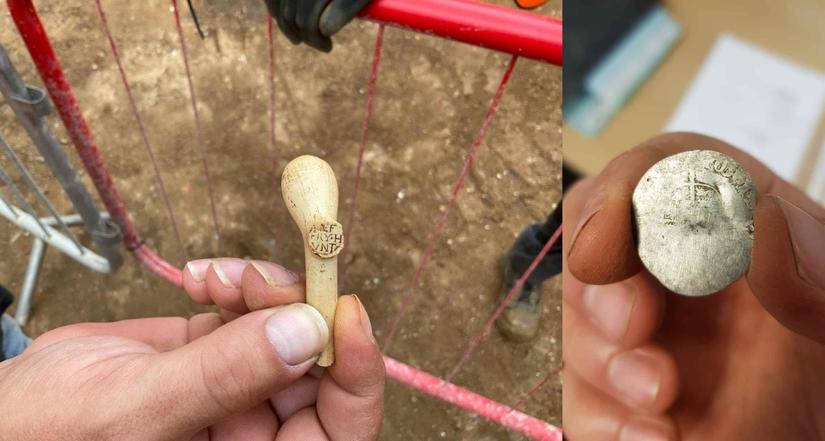Ramparts and records - English Civil War defences uncovered in Oxford
When you picture a typical archaeologist’s toolkit, you’re probably thinking of a trowel, shovel, brush - maybe even an iconic brown Fedora! But what about historical records? Ancient maps, texts, and images often form a vital part of the archaeological process. They provide a clearer understanding of what we might expect to find, as well as accounts of any previous excavations. The recent work we’ve been doing at Rhodes House in Oxford has highlighted the value that exploring these archives can bring to archaeology.
What has been found?
Working with Oxford City Council Archaeological Officer, David Radford, we’ve uncovered a large 17th century ditch. This is similar in date to nearby English Civil War fortifications, which were originally made up of a series of ramparts and ditches. They were built to defend Oxford from Parliamentarian forces during the reign of King Charles I.
These defences are well documented on historic maps (see image below), which clearly show them forming an inner and outer line encircling the city. At Rhodes House, the mapped Civil War rampart still survives and forms part of the eastern boundary of the site. However, surprisingly the newly uncovered 17th century ditch lies behind the rampart and may possibly form part of (previously unknown and unrecorded) inner defences.

“These excavations have provided the perfect opportunity to compare historical records with physical remains” explains our Senior Project Manager, Stewart Hoad. “Using both datasets in combination has given us a deeper understanding of the archaeology and history of Oxford than would otherwise have been possible”.
Finds from the site currently include two abraded silver coins, fragments of pottery and metal, and a bone comb. We’ve also discovered a clay pipe inscribed with the name ‘Jeffrey Hunt’. Interestingly, this is almost identical to another example found during a previous excavation at the nearby St Ebbe’s Church, suggesting that this particular manufacturer may have been a popular choice for those living in 17th century Oxford.

Why are these excavations taking place?
Excavations at Rhodes House are being carried out ahead of the construction of a new world-class convening centre. This will create a major new centre for study, conferences and events at Rhodes House, making it a centre for Rhodes Scholars and partnership programmes, the wider University of Oxford and the local community. The new development aims to conserve the existing Civil War rampart and make it more accessible to the public with up-to-date information boards, and tours of the historic site.
Dr Elizabeth Kiss, Warden of Rhodes House, said: “We are so excited that the transformation of Rhodes House will provide new facilities for our community in Oxford and beyond. The finds in the grounds of Rhodes House are fascinating and we are delighted this research by our friends at MOLA and Oxford City Council will contribute to our understanding of Oxford’s role in the Civil War.”
Rhodes House is home of the Rhodes Trust, whose Rhodes Scholarships to the University of Oxford are one of the best known international scholarships in the world. They also offer a range of global fellowship programmes to develop and connect compassionate and innovative people, committed to solving humanity’s challenges.